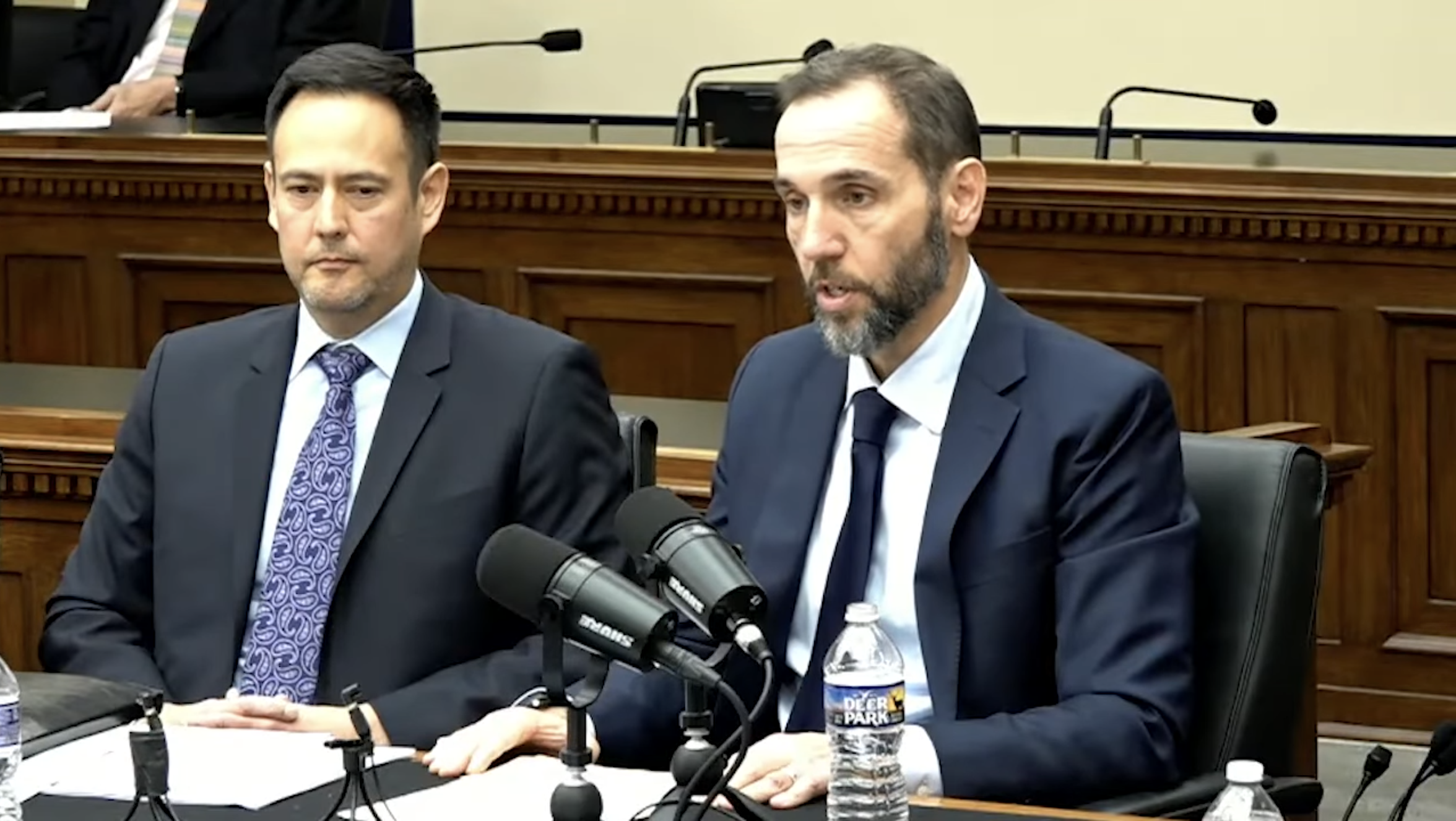Beyond Grabbing: Gender, Conflict, and the National Security Establishment
The next Administration faces a daunting list of challenges that combine military power and profound societal issues—from Mosul after ISIS, to another new strategy for Afghanistan, to preventing the further spread of violent extremism in North Africa, to limiting extremism’s appeal at home.
A growing body of academic literature and real-world experience suggests that an under-utilized tool to improve America’s disappointing performance in predicting, preventing, and ending conflict, extremism, and mass violence lies in plain sight.
Published by The Lawfare Institute
in Cooperation With

The next Administration faces a daunting list of challenges that combine military power and profound societal issues—from Mosul after ISIS, to another new strategy for Afghanistan, to preventing the further spread of violent extremism in North Africa, to limiting extremism’s appeal at home.
A growing body of academic literature and real-world experience suggests that an under-utilized tool to improve America’s disappointing performance in predicting, preventing, and ending conflict, extremism, and mass violence lies in plain sight.
The core insight is breathtakingly simple: Societies have different norms and expectations for different genders.
Ensuring that one’s analysis covers more than 50 percent of the population—and that policy proposals have the desired effects on all of a targeted population—can make the difference between success and failure.
The time thus seems ripe for a conversation about gender in the U.S. national security establishment—one that has nothing to do with grabbing, locker rooms or choice of pronouns, and one that moves definitively beyond the question of whether different genders “belong” at the table when war and conflict are the topic.
So we at the New America Foundation commissioned a series of off-the-record interviews of senior national security policymakers—men and women, Republicans and Democrats—to learn more about how the connections between women’s lived experience and the prevalence of extremism and conflict are understood in U.S. policymaking. What we learned suggests that it is perhaps a bit soon for the Obama Administration to hail the “remarkable progress that the national security workforce has made over recent years in recognizing the importance of diversity and inclusion to the success of their mission.”
Gender really matters in national security policy. A series of gender effects are predictive of violence and societal support for extremist movements. Multiple studies have now found a strong link between rates of gender-based violence and the likelihood of both intra- and inter-state conflict. Texas A&M professor Valerie Hudson, for example, draws a connection from the collapse of state-based security structures, their replacement by informal, kinship-based security networks, to the rise of violence against women and the rise of violence across society as a whole.
We are just at the beginning of understanding how the scarcity of young women in societies that prize male babies more highly than females affects social stability, but the first indicators are extremely worrying. We have anecdotal evidence, in the form of the interrogation of the sole Mumbai attacker to be captured alive, that the compelling argument for joining an extremist group was the opportunity to earn money and status that would allow him and his brothers to afford bride prices. Young men, in other words, face a particular gender dilemma in societies where their path to adulthood—and women’s value to their families—is still expressed through a bride price.
Societal constructs of masculinity may have important impacts on whether and how much sexual crimes feature in warfare. And researchers find as well that young women are more likely to participate in violent movements in societies where women’s roles are severely restricted.
Conversely, other gender dynamics can have extremely positive effects on conflict resolution and peacebuilding. Studies show that peace processes are significantly more durable when women are at the table.
Recognition of the importance of gender in matters of war and peace has been developing globally for more than two decades, sparked out of the UN’s 1995 Fourth World Conference on Women, famously held in Beijing. It has been driven by a collection of leaders, activists and scholars operating under the loose banner of “Women, Peace and Security.” Like any other community, it has its own impenetrable jargon (“gender mainstreaming”) and its own Scripture–most notably UN Security Council Resolution 1325, which created both official UN language affirming women’s roles in conflict prevention and resolution and a structure (National Action Plans) for nation-states and international organizations to plan and report on their progress in integrating gender perspectives in policymaking.
So you might think that policymakers would have gotten the message—or at least part of it. Not so. Not a single respondent in our study could cite research or hard evidence of the gender effects described above—that taking gender perspectives into account in policymaking not only makes for stronger U.S. teams, but also produces better outcomes around conflict prevention and resolution. Many asserted that gender perspectives were not relevant to “hard” national security policies—tending instead to turn to sex crimes and other arenas in which women are perceived as victims as appropriate areas for consideration of gender.
Policymakers are bought in—across gender, generational and ideological lines—to the principle that inclusivity produces better outcomes in policymaking and is helpful for societal stability. But, as one said, “I can make a case for gender’s relevancy to everything I’m working on, but it’s another question whether I’m actually doing something about it.”
Respondents were remarkably willing to talk about inclusion and diversity policies as little more than show: critical to demonstrate in public, but not at all relevant to policymaking behind closed doors:
“I really don’t think about gender when considering policy and never with implementation of policy,” another respondent told us. “The only time I think of gender grouped together with diversity is when we’re going into a meeting, it’s important to demonstrate that balance. Going in with all guys isn’t cool anymore.…”
Perhaps the most striking aspect of the survey is illustrated by this quotation, which highlights the degree to which interviewers had a difficult time keeping their subjects on the unfamiliar topic of gender in policymaking. Inevitably, the topic shifted to the more familiar ground of gender representation: are there enough women at the table, and if not, why not.
Although women’s representation at the assistant-secretary level and above in the national security bureaucracy is, by our rough count, at an all-time high of one-in-three, and although the Obama Administration has touted its achievements on this score, our interviews uncovered dramatic differences in perception across gender and political affiliation. The good news first: respondents across all categories agreed that women do belong in combat settings—a view that might not have been so uniform just a decade ago. Civilian Republican men, however, were still troubled by women’s allegedly unique role in child-rearing, and by their own discomfort at the prospect of women being killed or captured.
More dramatically, while female respondents saw the idea of gender “mainstreaming” as leading to increased consideration of various gender perspectives in policymaking, men saw the end goal being to take gender off the table altogether—losing, in other words, all the analytic insights of gender difference.
Further, not all respondents were on board with the idea that diversity and inclusion should be high priorities for them as managers and leaders: “I can’t be concerned with how many women and Muslims are in our force—I’m more concerned with how many computer scientists are in our force.” Many cited concerns that will be familiar from private-sector and academic debates about gender, race, ability and affirmative action: that the national security community is a meritocracy too important to be disrupted by “social engineering”; that, in fact, current leaders are gender-blind, and that gender-blindness, rather than gender-awareness, is the preferable outcome of diversity policy.
The comments suggested that, even after decades of notable missteps and self-criticism in dealing with complex and unfamiliar cultures, too many senior national security thinkers are still proceeding as though policy can be made blind to cultural and social influences—gender-based or otherwise.
These candid assessments are not an indictment or an excuse to abandon the project of diversity and inclusion. Rather, they offer lessons for the Obama Administration and, more importantly, its successors.
First, presidential transition offers a rare opportunity to revamp assessment systems, as USAID has effectively done. National security policy-makers should be collecting data on how policy outcomes have differed across gender in affected societies, how factors of gender enhanced or held back effectiveness.
Second, inclusion is a task for leadership, and our interviews make clear that leadership is not where it might be. Appointees to prestigious national security leadership positions should be expected to be conversant with the facts on how inclusivity matters beyond checking the box—and instructed to share this knowledge frequently with their teams. The embarrassing prevalence of the perception that gender inclusion is window-dressing needs to be a priority for national security leaders to root out like racism or any other form of prejudice.
Finally, don’t let the essence of inclusivity theory get lost in jargon and numbers—or in social conflict. The terms “women, peace and security” and “gender mainstreaming” are deeply meaningful to the advocates who have fought for decades to get the concepts recognized—but they were almost entirely unrecognized by our interviewees. We also saw a tendency to focus on numbers—one woman? Enough women? Too many women? If national security managers ignore how policies are affecting women and men differently in societies at risk, the policy will have failed
Our survey reinforced a disheartening aspect of this year’s national conversation about gender: how quickly personal experience takes the place of research. The men in our survey who asserted that they were “gender-blind” and that such blindness, rather than gender-awareness, should be the goal, were overwhelmingly more likely to bring up the fact that their own mothers had worked, or were “strong,” as a source of their beliefs. The message to our national security establishment needs to be clear: this is about research. It’s not about you; it’s not about some nefarious women’s agenda.
And, with all due respect, it’s not about your mom.





